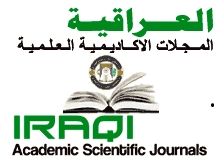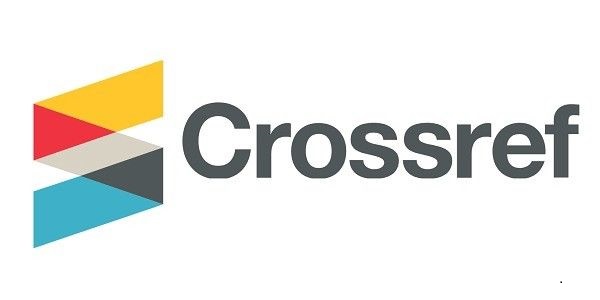Soft Clustering Techniques: An In-Depth Analysis of GMM and FCM Algorithms and Comparative Performance
DOI:
https://doi.org/10.56714/bjrs.50.2.19Keywords:
Selected:Soft Clustering, Gaussian Mixture Model (GMM), Fuzzy C-Means (FCM), Clustering TechniquesAbstract
Clustering is one of the modern techniques that have been discovered to solve the problem of the degree of similarity and dissimilarity between data within the network. Clustering originates from unsupervised techniques whose main function is to organize data into subsets based on the degree of similarity between these data. The research conducted an analytical study on Fuzzy C-Means (FCM) and Gaussian Mixture Model (GMM), which are considered the most prominent clustering techniques and aims to compare them in terms of the time taken by each algorithm to cluster the data and the energy consumed. Experiments were conducted in four different scenarios. The experiments concluded that GMM showed variation in energy consumption when the number of clusters gradually increased, while FCM showed clear stability in most cases. In terms of time, GMM was generally faster with fluctuations in performance, while FCM's performance was stable but relatively slower. Ultimately, each algorithm is used in a specific environment. GMM is fast with fluctuations in performance, which is useful in applications that require speed in performance, unlike FCM, which is relatively stable but slower, which is useful in applications that require accuracy in results at the expense of time.
Downloads
References
B. WANG, L. YAN, Q. RONG, J. CHEN, P. SHEN, and X. DUAN, “Dynamic Gaussian process regression for spatio-temporal data based on local clustering,” Chinese J. Aeronaut., 2024, Doi: 10.1016/j.cja.2024.06.026.
X. Yan, “Application of Image Segmenting Technology Based on Fuzzy C-Means Algorithm in Competition Video Referee,” IEEE Access, vol. 12, no. January, pp. 34378–34389, 2024, Doi: 10.1109/ACCESS.2024.3355465.
X. Ran, Y. Xi, Y. Lu, X. Wang, and Z. Lu, Comprehensive survey on hierarchical clustering algorithms and the recent developments, vol. 56, no. 8. Springer Netherlands, 2023. Doi: 10.1007/s10462-022-10366-3.
S. Zhou et al., “A Comprehensive Survey on Deep Clustering: Taxonomy, Challenges, and Future Directions,” Proc. ACM Comput. Surv., vol. 1, no. 1, 2022, [Online]. Available: http://arxiv.org/abs/2206.07579.
A. E. Ezugwu et al., “A comprehensive survey of clustering algorithms: State-of-the-art machine learning applications, taxonomy, challenges, and future research prospects,” Eng. Appl. Artif. Intell., vol. 110, no. January, p. 104743, 2022, Doi: 10.1016/j.engappai.2022.104743.
M. B. Ferraro and P. Giordani, “Soft clustering,” Wiley Interdiscip. Rev. Comput. Stat., vol. 12, no. 1, pp. 1–12, 2020, Doi: 10.1002/wics.1480.
H. Yin, A. Aryani, S. Petrie, A. Nambissan, A. Astudillo, and S. Cao, “A Rapid Review of Clustering Algorithms,” pp. 1–25, 2024, [Online]. Available: http://arxiv.org/abs/2401.07389.
G. Jouan, A. Cuzol, V. Monbet, and G. Monnier, “Gaussian mixture models for clustering and calibration of ensemble weather forecasts,” Discret. Contin. Dyn. Syst. - S, vol. 16, no. 2, pp. 309–328, 2023, Doi: 10.3934/dcdss.2022037.
H. Wang, Y. Tian, A. Li, J. Wu, and G. Sun, “Resident user load classification method based on improved Gaussian mixture model clustering,” MATEC Web Conf., vol. 355, p. 02024, 2022, Doi: 10.1051/matecconf/202235502024.
T. D. Adugna, A. Ramu, and A. Haldorai, A Review of Pattern Recognition and Machine Learning, vol. 4, no. 1. 2024. Doi: 10.53759/7669/jmc202404020.
O. N. Purba, D. N. Sitompul, T. H. Harahap, S. R. D. Saragih, and R. F. Siregar, “Application of Fuzzy C-Means Algorithm for Clustering Customers,” Hanif J. Inf. Syst., vol. 1, no. 1, pp. 26–36, 2023, Doi: 10.56211/hanif.v1i1.8.
J. M. Prasad, S. V P, A. Professor, and U. Students, “Analysis of Clustering Algorithms for Covid-19 in Ct Images,” Turkish J. Physiother. Rehabil., vol. 32, no. 3, 2021, [Online]. Available: www.turkjphysiotherrehabil.org.
U. Qamar, “A dissimilarity measure based Fuzzy c-means (FCM) clustering algorithm,” J. Intell. Fuzzy Syst., vol. 26, no. 1, pp. 229–238, 2014, Doi: 10.3233/IFS-120730.
D. Liu, N. Xiao, Y. Zhang, and X. Peng, “Unsupervised flight phase recognition with flight data clustering based on GMM,” I2MTC 2020 - Int. Instrum. Meas. Technol. Conf. Proc., pp. 1–6, 2020, Doi: 10.1109/I2MTC43012.2020.9128596.
K. Zhou and S. Yang, “Effect of cluster size distribution on clustering: a comparative study of k-means and fuzzy c-means clustering,” Pattern Anal. Appl., vol. 23, no. 1, pp. 455–466, 2020, Doi: 10.1007/s10044-019-00783-6.
H. Asheri, R. Hosseini, and B. N. Araabi, “A new EM algorithm for flexibly tied GMMs with large number of components,” Pattern Recognit., vol. 114, 2021, Doi: 10.1016/j.patcog.2021.107836.
M. J. Mbyamm Kiki, J. Zhang, and B. A. Kouassi, “MapReduce FCM clustering set algorithm,” Cluster Comput., vol. 24, no. 1, pp. 489–500, Mar. 2021, Doi: 10.1007/s10586-020-03131-0.
X. Huang, H. Xu, and J. Chu, “Nonlinear Model Order Selection: A GMM Clustering Approach Based on a Genetic Version of em Algorithm,” Math. Probl. Eng., vol. 2022, 2022, Doi: 10.1155/2022/9958210.
S. Suman, D. Kumar, and A. Kumar, “Fuzzy Based Convolutional Noise Clustering Classifier to Handle the Noise and Heterogeneity in Image Classification,” Mathematics, vol. 10, no. 21, 2022, Doi: 10.3390/math10214056.
J. You, Z. Li, and J. Du, “A new iterative initialization of EM algorithm for Gaussian mixture models,” PLoS One, vol. 18, no. 4 April, pp. 1–17, 2023, Doi: 10.1371/journal.pone.0284114.
R. J. Kuo, M. N. Alfareza, and T. P. Q. Nguyen, “Genetic based density peak possibilistic fuzzy c-means algorithms to cluster analysis- a case study on customer segmentation,” Eng. Sci. Technol. an Int. J., vol. 47, Nov. 2023, Doi: 10.1016/j.jestch.2023.101525.
D. R. Welikanna and S. Jin, “A data driven oil spill mapping using GMM clustering and damping ratio on X-Press Pearl ship disaster in the Indian Ocean,” Mar. Pollut. Bull., vol. 203, no. January, p. 116392, 2024, Doi: 10.1016/j.marpolbul.2024.116392.
B. Yu, Z. Zheng, M. Cai, W. Pedrycz, and W. Ding, “FRCM: A fuzzy rough c-means clustering method,” Fuzzy Sets Syst., vol. 480, Mar. 2024, Doi: 10.1016/j.fss.2024.108860.

Downloads
Published
Issue
Section
License
Copyright (c) 2024 Basrah Researches Sciences

This work is licensed under a Creative Commons Attribution 4.0 International License.







